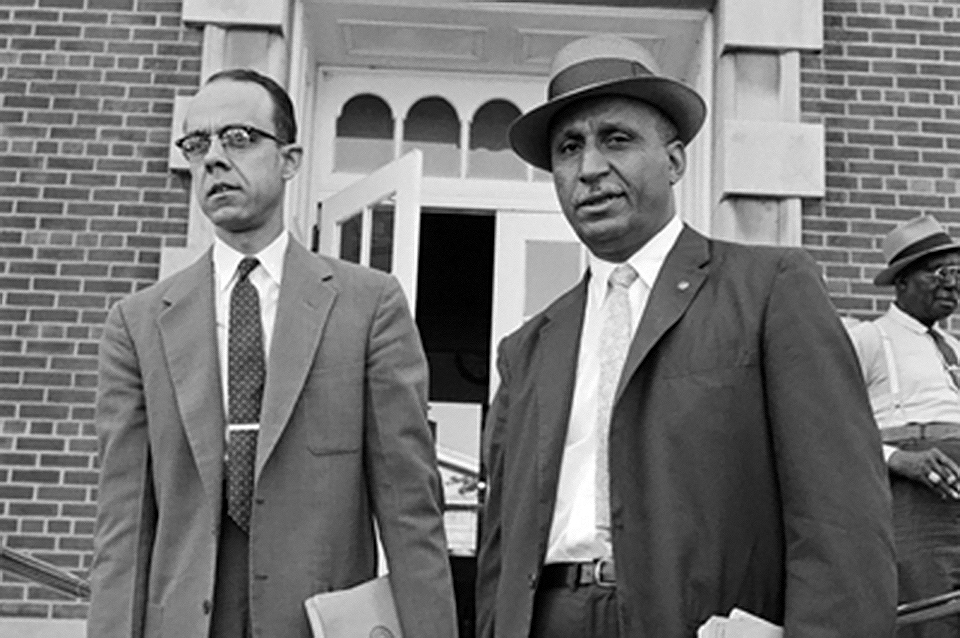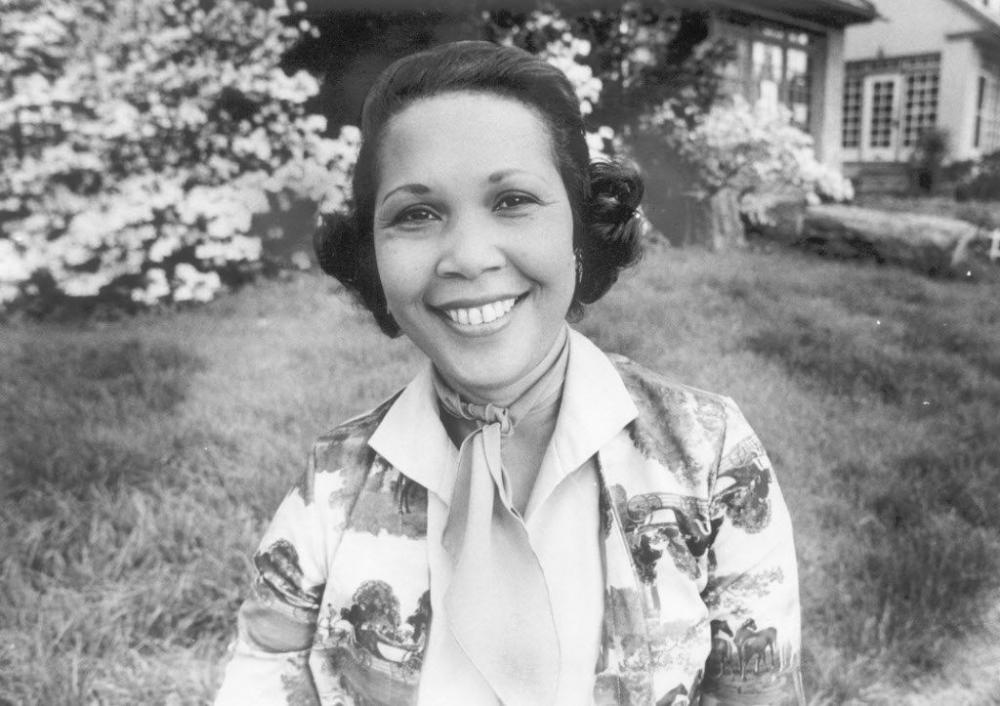Johns's Legacy in the Civil Rights Movement
School Desegregation and the Supreme Court
Charles Hamilton Houston and his group of NAACP lawyers had an extraordinary strategy to combat segregation: take examples of grossly unequal schools or unfair policies to the courts. When Barbara Johns went on strike and the NAACP agreed to take the Moton case, Davis v. County School Board of Prince Edward County. Barbara Johns' name was not on the case - in fact, she had moved out of Virginia for safety reasons. The case was unanimously denied by the district court and then appealed to the Supreme Court, where it was bundled up with four other cases to form Brown v. Board of Education, the case that outlawed segregation in public schools.

Spottswood Robinson III and Oliver W. Hill Jr., NAACP lawyers in Virginia. Source.
Consequences of Desegragation
However, the Supreme Court did not provide a plan for desegregation, only ruling that schools desegregate ''with all deliberate speed.'' Virginia was the locus for Massive Resistance, a movement by the white power structure to circumvent the mandate to desegregate. Public schools were shut down for years as white children attended private schools and most black children and children unable to afford a workaround languished.

Buddy Trammell, Max Stiles, and Tommy Sanders, students at Clinton High School in Clinton, Tennessee, picket their school when it becomes the first state-supported school to integrate, on Aug. 27, 1956. AP Photo.
Barbara's Legacy
Barbara Johns herself had moved to Montgomery, Alabama, where her uncle Vernon Johns was retiring. He was succeeded in his position as minister by a young man named Martin Luther King, Jr. Johns herself went on to attend university and live a relatively quiet life as a librarian, but her legacy continued in the growth and power of the civil rights movement. The Children’s Crusade, the Freedom Rides, and the Black Panthers were all driven by young people like Barbara Johns and helped catalyze greater equality and change America for the better.

Barbara Johns Powell. By Sharon Wohlmuth. May 1979. Source.
The Present Day
Even so, the fight against racism continues. This is exemplified by the recent Neo-Nazi demonstration in Charlottesville - in fact, Virginia Governor Terry McAuliffe responded to the tragic deaths of counterprotestors by invoking Barbara Johns.
Today's young people must continue to stand up and protest inequality, just as Barbara Johns did over 60 years ago.